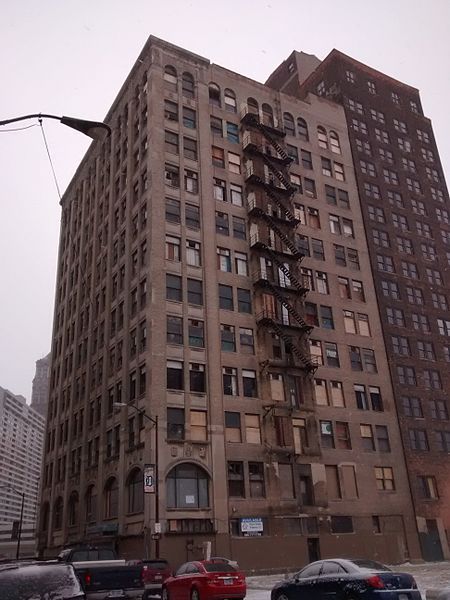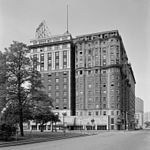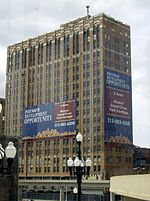Park Avenue Building
1923 establishments in MichiganBeaux-Arts architecture in MichiganBuildings and structures completed in 1923Detroit building and structure stubsSkyscraper office buildings in Detroit

The Park Avenue Building is a 12-story beaux-arts high-rise located at 2001–2017 Park Avenue in the Grand Circus Park Historic District in Downtown Detroit, Michigan. Formerly known as the General Necessities Building, the 101,565 sq. ft. office building was designed by Albert Kahn in 1922.The building was previously owned by Ralph Sachs, the former owner of the historic Hotel Charlevoix which was demolished in 2013, the Park Avenue building was listed for sale on July 3, 2015, for $16,500,000. The Park Avenue Building has been targeted for demolition by city planners as part of the "Arena District" rehabilitation effort.
Excerpt from the Wikipedia article Park Avenue Building (License: CC BY-SA 3.0, Authors, Images).Park Avenue Building
Park Avenue, Detroit
Geographical coordinates (GPS) Address External links Nearby Places Show on map
Geographical coordinates (GPS)
| Latitude | Longitude |
|---|---|
| N 42.33643 ° | E -83.05282 ° |
Address
Park Avenue Bldg
Park Avenue 2001
48226 Detroit
Michigan, United States
Open on Google Maps









